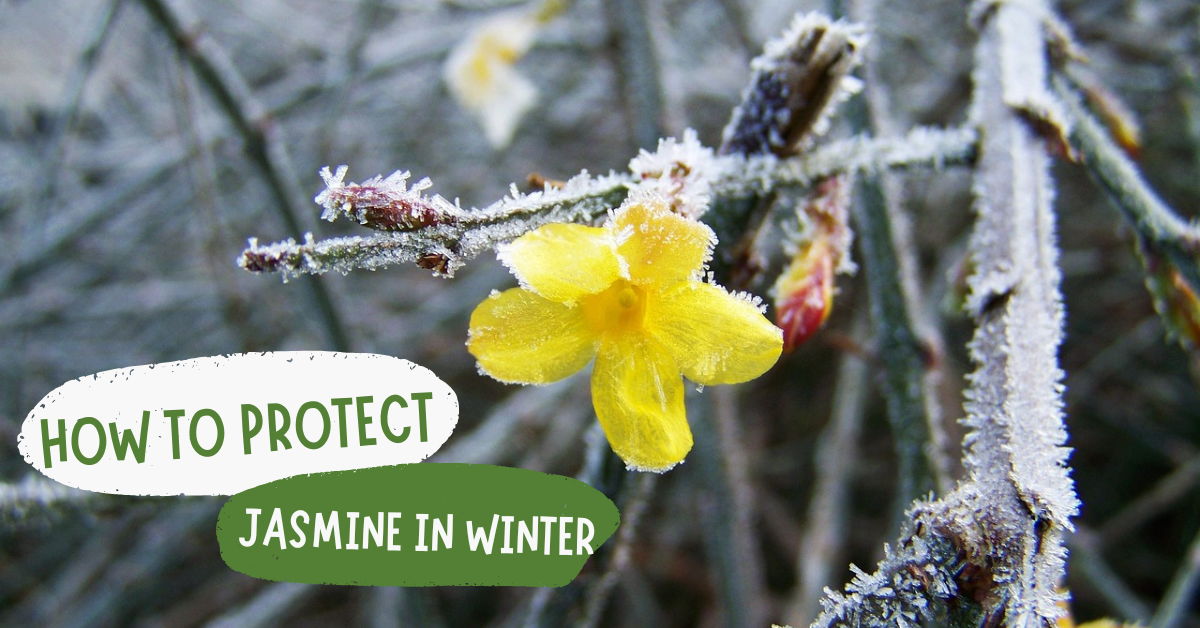Winter is at the door steps and the gardeners can think of only one question “How To Protect Jasmine In Winter”. All love the alluring and enchanting fragrance of jasmine flowers and have always been in the garden of gardening enthusiasts, providing its gorgeous blooms. Jasmine has almost 200 species that can be grown as shrubs and vines. Many of its variety is known for its ornamental values.
Most of the jasmine varieties are native to tropical and warm climate zones, and in these types of climates, you can quickly grow jasmine plants. People living in cooler climates may find little trouble during winter, but with extra care, your jasmine will work perfectly in winter and produce sweet, aromatic flowers. Here are some varieties which can be grown in the United States.
- Winter Jasmine: It can survive in Zones 6 to 9, and you might see them flowering in winter. It can tolerate winter cold as minus as -5 F.
- Arabian Jasmine – Can thrive in Zone 9 to 11
- Common Jasmine: Zone 7 to 10 is a comfortable space for these plants.
- Star Jasmine – Zone 8 to 10.
Mulching For Root Protection
Mulching the soil is the best thing you can do for your jasmine plant to protect it from harsh winter cold. It’s like covering your plant with a blanket. You can choose shredded leaves, tree bark, coconut husk, gravel, or stone according to availability to shield the plant from harsh frost and give proper insulation.
Benefits of Mulching
- Mulching around your plant will protect crowns and roots from freezing.
- It insulates the plant and protects it from sudden temperature drops.
- It helps the soil retain moisture, which protects it from winter drought.
How To Protect Jasmine In Winter With Mulching
- Mulching has many benefits, but when done correctly.
- When applying mulch, ensure it is around 2- 4 inches around the plant and the crown is visible.
- Don’t compress the soil with the mulch. Air circulation and drainage are also crucial for the plant’s growth.
Bringing Jasmine Indoors
When the winter is about to come, I know you will think about taking your precious jasmine plants indoors, but you must keep a few points in mind before moving your plants indoors because lack of sunlight and dry air are fatal for plants’ health.
- You can not directly bring your jasmine plants indoors as winter arrives. You have to train them for the indoors before the first frost so that they can survive indoors.
- Before the first frost, bring your jasmine plants indoors for 2-3 hours every day.
- Place your pots near a south-facing window where it can get bright indirect sunlight.
- Jasmine plants are fond of a humid environment. You can place your pot on a pebble tray, or if you have a humidifier, then your job is done. If both are not convenient, then misting it with bottle spray will work fine.
- Feed them with a diluted liquid fertilizer.
Gentle Reminder – Don’t place your plant near a furnace.
Shelters for Ground-Planted Jasmine
Outdoor jasmine plants can not be treated the same as indoor ones and need arrangements accordingly to protect them from the cold wind. You can try different techniques, like building a barrier around your plant or constructing shelterbelts or windbreaks.
- You can use materials like wooden blocks or plastic sheets, easily available at home.
- You have to build protective barriers according to the height and width of the plant so that they can block the wind efficiently.
- Applying a 2-3 inches thick layer of mulch around your jasmine plant will enhance the level of protection by lowering the chances of thaw ( becoming liquid or soft from a frozen state )
Pruning Before Winter
For the new gardening enthusiast, puring the plant may seem like, “ Why destroy the beautiful look of our plant? “. At least, this was what I thought when I was new at gardening. Pruning has many benefits, but when it comes to protecting jasmine plants from winter, pruning the branches will save the plant from wind and snow damage and enhance air circulation.
Just looking for the diseased and damaged foliage and clipping them off pruning also helps in shaping the plant to create a sophisticated look.
Adjusting Watering & Feeding
In winter, like most of the plant’s jasmine, it also requires less watering. If you water your plants in the evening, you have to change the routine and start watering them in the morning. That will give them extra time so that the soil moisture can evaporate, reducing the chance of thawing.
Avoid feeding your jasmine plants in winter; they don’t require external supplements when the plant is not in its active thriving phase.
Conclusion
Protecting jasmine plants from frosty winter is a hectic task, but after all the efforts, when you see your plant foliage spreading and producing alluring blooms, you will get another level of satisfaction. If you start planning the routine before the first frost arrives and what you have to do after the winter, your plants’ health and resilience will be in mint condition.
